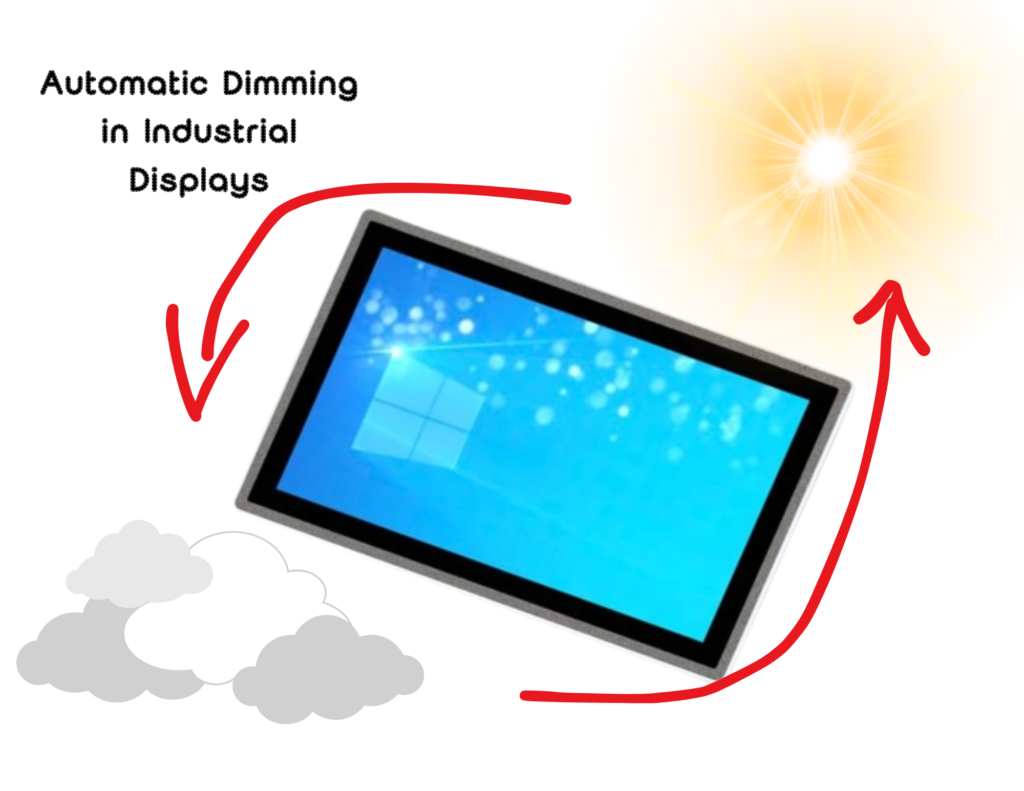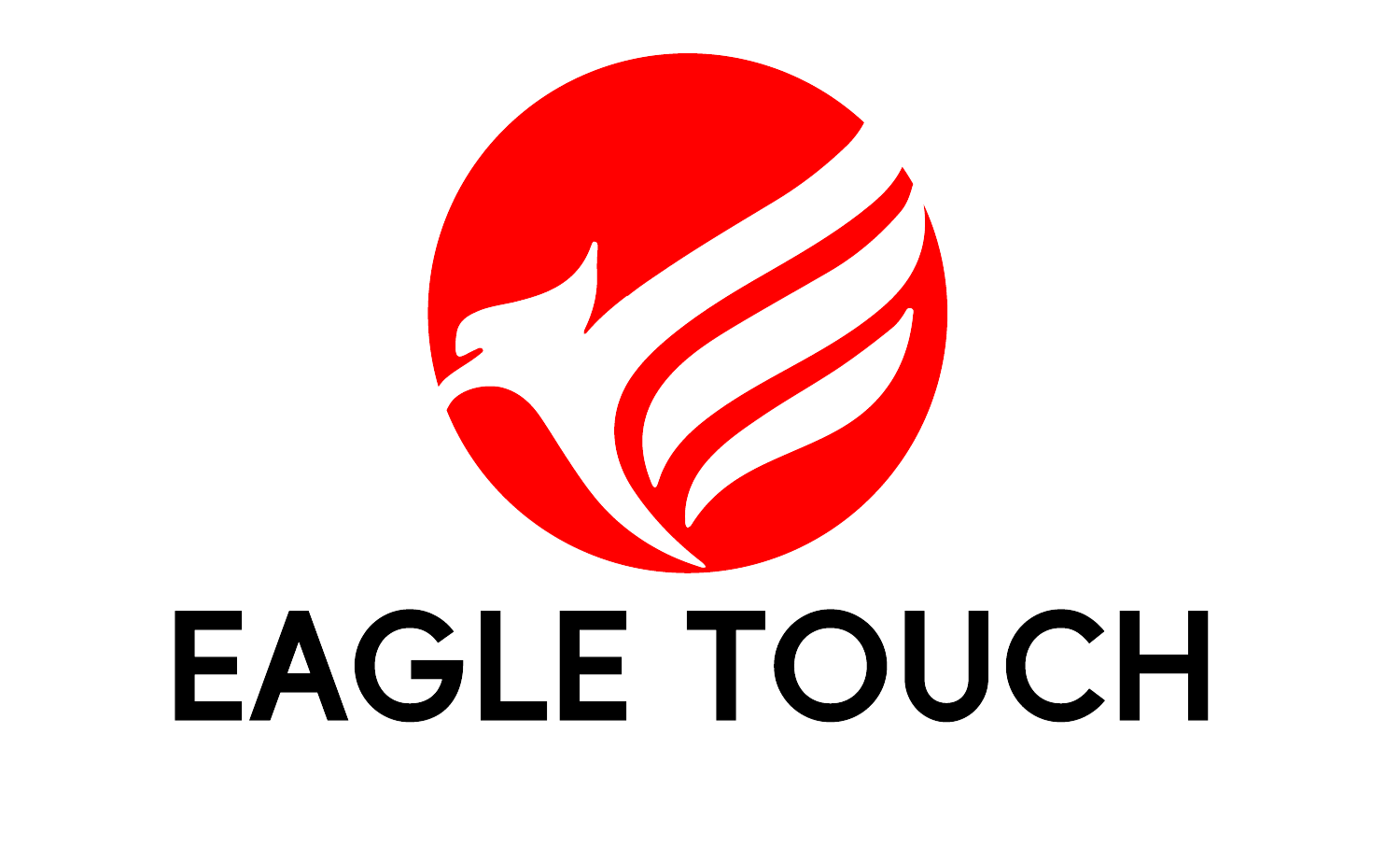
In industrial settings, where operations are often continuous and efficiency is crucial, the energy usage of equipment plays a vital role. Industrial displays, which are essential for control and monitoring systems, are no exception. As energy costs rise and environmental concerns grow, improving the energy efficiency of these displays becomes increasingly important. Features like automatic dimming and power-saving modes can greatly reduce energy consumption and extend the lifespan of the displays. This article explains how these features function, their benefits, and how they help enhance energy efficiency in industrial applications.
Understanding Automatic Dimming in Industrial Displays
What is Automatic Dimming?
Automatic dimming is a feature that automatically adjusts the brightness of a display based on the surrounding light levels. When the ambient light in the environment decreases, the display dims to lower energy usage and make viewing more comfortable by reducing glare. On the other hand, when the ambient light increases, the display brightens to ensure the screen remains clear and easy to read. This continuous adjustment helps the display maintain the ideal brightness for any lighting condition, which is especially important in environments where light levels change frequently. This not only enhances visibility but also contributes to energy efficiency and prolongs the life of the display.
How Automatic Dimming Works
Automatic dimming systems use light sensors to monitor the brightness of the surrounding environment. These sensors, which are typically built into the display or located nearby, measure the amount of ambient light and send this information to the display’s control system. The control system then adjusts the display’s brightness in real-time according to preset settings or algorithms to ensure optimal visibility and energy efficiency.
- Light Sensors: These sensors are often photodiodes or light-dependent resistors (LDRs) that detect the intensity of the light around the display. They continuously gather data about the surrounding light conditions.
- Control Algorithms: The display’s built-in software, known as firmware, interprets the data from the sensors and adjusts the brightness of the screen accordingly. In some systems, operators can manually override these settings, allowing them to set minimum and maximum brightness levels based on specific needs or preferences.
This system ensures that the display is always at the right brightness level, reducing eye strain, saving energy, and prolonging the life of the display.
Benefits of Automatic Dimming
Energy Savings: Automatic dimming reduces the display’s brightness when full brightness isn’t necessary, which can lead to significant energy savings. This feature is particularly useful in environments where the lighting conditions change frequently, such as facilities with large windows that let in natural light or outdoor industrial areas.
Longer Display Lifespan: Lowering the brightness not only conserves energy but also puts less strain on the display’s backlight system. This reduced stress can extend the lifespan of the display, which is especially crucial for industrial displays that are required to run continuously over long periods.
Enhanced Operator Comfort: Besides saving energy, automatic dimming helps reduce eye strain for operators working in dim lighting. By adjusting the brightness to match the environment, it makes the display easier on the eyes, leading to better focus and less fatigue, which can ultimately improve overall productivity.
Exploring Power-Saving Modes in Industrial Displays
What are Power-Saving Modes?
Power-saving modes are features that help reduce a display’s energy use when it doesn’t need to be fully active. These modes usually work by lowering the screen’s brightness, turning off the backlight, or even putting the display into a low-power state or completely shutting it down during times when it’s not being used. This helps save energy and can be especially useful in settings where the display isn’t constantly in use.
Types of Power-Saving Modes
- Sleep Mode: In this mode, the display reduces its power consumption to a minimum by turning off the backlight and reducing the screen’s activity to the lowest possible level. The display remains in a low-power state until it receives an input signal or is manually reactivated.
- Standby Mode: Similar to sleep mode, standby mode significantly reduces power usage by dimming the display and disabling unnecessary functions. However, it remains in a state of readiness, allowing for a quicker return to full operation when needed.
- Eco Mode: This mode optimizes the display settings for energy efficiency by adjusting the brightness, contrast, and other parameters to the lowest acceptable levels for the current application. Eco mode is often used during periods of low activity or when full brightness is not required.
How Power-Saving Modes Work
Power-saving modes are usually activated automatically based on preset timers or sensor inputs. For example, if a display detects no user interaction for a specified period, it may enter sleep mode. Some advanced systems also use motion sensors to detect the presence of operators, ensuring that the display is only fully active when needed.
- Timers and Inactivity Sensors: These systems monitor user activity and automatically reduce power consumption when no interaction is detected for a set period.
- Customizable Settings: Operators can often customize the timing and intensity of power-saving modes to suit their specific needs. For example, a display could be set to enter sleep mode after 10 minutes of inactivity or switch to eco mode during non-peak hours.
Benefits of Power-Saving Modes
- Significant Energy Reduction: Power-saving modes can drastically reduce energy consumption, especially in facilities where displays are not in constant use. This not only lowers operational costs but also contributes to broader sustainability goals.
- Reduced Heat Generation: Lower power usage means less heat generation, which is beneficial in industrial environments where temperature control is critical. By reducing the heat output of displays, power-saving modes can help maintain optimal operating conditions and reduce the strain on cooling systems.
- Lower Maintenance Costs: By reducing the workload on the display components, power-saving modes can lead to lower maintenance costs over time. Components like the backlight have a finite lifespan, and by minimizing their use, these modes help extend the interval between replacements or repairs.
Implementing Energy Efficiency Strategies in Industrial Settings
Integrating Automatic Dimming and Power-Saving Modes
To fully capitalize on the benefits of automatic dimming and power-saving modes, it’s essential to integrate these features into the overall energy management strategy of the facility. Here are some steps to consider:
- Assess the Environment: Conduct an assessment of the lighting conditions and usage patterns in your facility. This will help determine the most appropriate settings for automatic dimming and power-saving modes.
- Customize Settings: Adjust the sensitivity of the light sensors and the timing of power-saving modes to match the specific needs of your operation. For example, in a control room that is staffed around the clock, you might set a longer delay before the display enters sleep mode.
- Monitor and Adjust: Regularly monitor the performance of the displays and adjust the settings as needed. This ensures that the energy-saving features are working as intended and providing the maximum benefit.
- Educate Operators: Ensure that operators are aware of the energy-saving features and understand how to use them. Providing training on how to manually adjust settings can further optimize energy usage.
The Broader Impact on Sustainability
The use of automatic dimming and power-saving modes in industrial displays is not just about reducing energy bills; it’s also a key component of a broader sustainability strategy. By minimizing energy consumption, these features help reduce the carbon footprint of industrial operations, contributing to global efforts to combat climate change.
Moreover, as regulations around energy efficiency become more stringent, implementing these technologies can help facilities stay ahead of compliance requirements and avoid potential penalties.
Conclusion
Automatic dimming and power-saving modes are powerful tools in enhancing the energy efficiency of industrial displays. By intelligently adjusting the display’s operation based on real-time conditions and usage patterns, these features not only reduce energy consumption but also extend the lifespan of the equipment and improve operator comfort.
In an era where energy efficiency and sustainability are increasingly important, integrating these features into industrial display systems is not just a smart choice—it’s a necessary one. By doing so, industrial operators can achieve significant cost savings, reduce environmental impact, and ensure the long-term reliability of their critical display systems.




